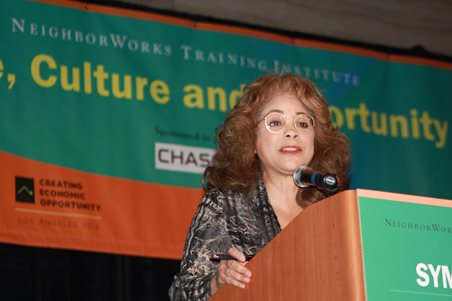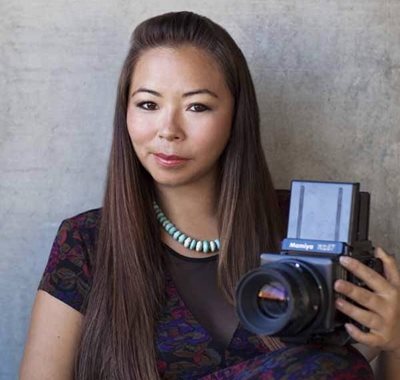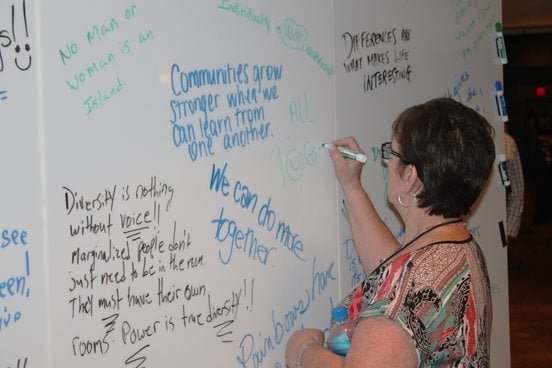How many of us would admit to being biased, to ourselves or to anyone else? Especially if we work for a nonprofit whose mission is to help the less-advantaged? How can we in good conscience do such work if we harbor feelings of superiority?
 In her keynote speech at NeighborWorks America’s May 4 symposium, “Race, Culture and Opportunity,” civil rights attorney Connie Rice candidly discussed her own journey of self-discovery. She recounted taking an “implicit association test” (IAT), the same online assessment taken recently by members of NeighborWorks’ internal REDI (Race, Equity, Diversity and Inclusion) team to challenge our own thinking. The IAT attempts to expose hidden biases by measuring the strength of unconscious associations made between characteristics (skin color, weight, sex, sexual orientation, etc.), judgements (good, bad) and stereotypes (such as intelligent and athletic). Participants’ scores (strength of likely biases) are based on the amount of time it takes, on average, to sort images into categories.
In her keynote speech at NeighborWorks America’s May 4 symposium, “Race, Culture and Opportunity,” civil rights attorney Connie Rice candidly discussed her own journey of self-discovery. She recounted taking an “implicit association test” (IAT), the same online assessment taken recently by members of NeighborWorks’ internal REDI (Race, Equity, Diversity and Inclusion) team to challenge our own thinking. The IAT attempts to expose hidden biases by measuring the strength of unconscious associations made between characteristics (skin color, weight, sex, sexual orientation, etc.), judgements (good, bad) and stereotypes (such as intelligent and athletic). Participants’ scores (strength of likely biases) are based on the amount of time it takes, on average, to sort images into categories.
Rice, a self-described “feminist,” said the test indicated she unconsciously favors women over men, which could affect her decisions regarding who gets plum assignments on her staff, who she promotes, who she socializes with, etc. As a REDI team member, I took several of the tests as well, and my scores indicated I have a bias in favor of Arab Muslims, yet feel safer in the presence of white-skinned people. The former is not so surprising, because I lived in the the Gaza Strip and still run a youth project there in my “off hours” – although I am not Muslim myself. I question the latter, though, since I have a biracial family. And indeed, the Project Implicit website says it offers “possible interpretations that have a basis in research done at the University of Washington, University of Virginia, Harvard University, and Yale University; however, we make no claim for their validity.” Still, the provocative self-questioning the test inspires is healthy.
In Rice’s case, she also shared her lack of personal comfort with transgender people, and her decision to “run toward” that discomfort rather than away. So, for instance, rather than shying away from a transgender makeup artist, she sat right down in her chair and chatted. Implicit biases can be manifest even within your own race, age group, etc. For example, Rice admitted that to poor blacks in the Los Angeles “projects,” she might as well be a white woman from Pasadena because of her social and income status. “A lot of middle-class black people, like cops, are scared of poor black people,” she said. “I tell them that before they can police, they need to sit down with them, break bread, help them with their chores, just get to know them as people.”
That’s exactly what diversity consultant Verna Myers suggests in a TEDx talk: “Expand your social circle,” she advises. “Who’s missing? Young black people? Muslims? Arabs? Look around you in your workplace, your church, your school. Something different and powerful will happen when you embrace instead of avoid them.”
It needs relentless, unafraid pursuit of compassion.
Every action or inaction
disrupts or perpetuates that power of oppression,
but you choose
to upset the set up
disrupt the corrupt
stand against the standardization
hunger strike for the hungry.
You were meant to be different,
you are greater than normal,
you are more than an activist,
you are deeply and truly necessary.
Fong Tran, spoken-word artist
Beyond the stereotypes: Native Americans
 Implicit biases are typically based on stereotypes deeply embedded in our cultures and social norms. This is particularly true for Native Americans. In her lunch talk at the NeighborWorks Training Institute symposium, Matika Wilbur (a member of the Swinomish and Tulalip tribes in Washington state) shared the results of a Google images search she conducted for Native Americans: an array of photos and paintings, often sepia-toned, of stoic-looking people (mostly men) in feathered headdresses. In other words: no contemporary images of individuals with their own, unique identities.
Implicit biases are typically based on stereotypes deeply embedded in our cultures and social norms. This is particularly true for Native Americans. In her lunch talk at the NeighborWorks Training Institute symposium, Matika Wilbur (a member of the Swinomish and Tulalip tribes in Washington state) shared the results of a Google images search she conducted for Native Americans: an array of photos and paintings, often sepia-toned, of stoic-looking people (mostly men) in feathered headdresses. In other words: no contemporary images of individuals with their own, unique identities. It was largely to bust these stereotypes that Wilbur launched Project 562, a showcase of photographs of citizens from every federally recognized tribe in the United States (now 566). So far, she has taken nearly 1,000 portraits—and has about 200 tribes left to go.
“We must not make children choose between their culture and education,” Wilbur said. “Everywhere in this country there is an indigenous history and culture. There used to be 500 indigenous languages, but today, it’s down to 200. Instead of annihilating differences, let’s learn to engage and embrace.”
Unlike common perception, Native Americans live in virtually every state—15 of which are home to more than 100,000 each. Seventy percent live in urban areas, and only about 18 percent live on reservations.
“Look at the statistics for Native Americans in your state, then start making relationships with organizations that represent them,” advised Vickie Oldman-John of Seven Sisters Development in Rio Rancho, New Mexico, in a panel discussion. “It’s all about relationships with this community. Be intentional about it.”
Diversity is coming to a theater near you

The bottom line on why we should care about understanding each of the communities that make up the cultural mosaic in the United States was laid out clearly by Manuel Pastor, PhD, professor of sociology, American studies and ethnicity at the University of Southern California and author of "Equity, Growth and Community." He showed a series of graphs that should serve as a wake-up call:
- Whites are on track to lose their majority status. By the year 2040, whites will be just half of the U.S. population, down from 69 percent in 2000.
- Latinos are dominating the next generation. Between 2000 and 2010, the number of whites younger than 18 plunged by about 4 million, whereas young Latinos grew by nearly 5 million. (Young blacks dropped slightly and Asian-Pacific Islanders grew a little.) Put another way, the median age of Latinos in 2010 was 27, compared to 32 for blacks, 35 for Asians-Pacific Islanders and 42 for whites.
- Income inequality is growing—with non-whites losing out. Jobs requiring only a high school degree, thus offering the lowest incomes, are dominated by Latinos (74 percent of new Latino immigrants and 47 percent of those who are U.S. born hold these jobs), followed by Native Americans (49 percent) and U.S.-born blacks (47 percent).

